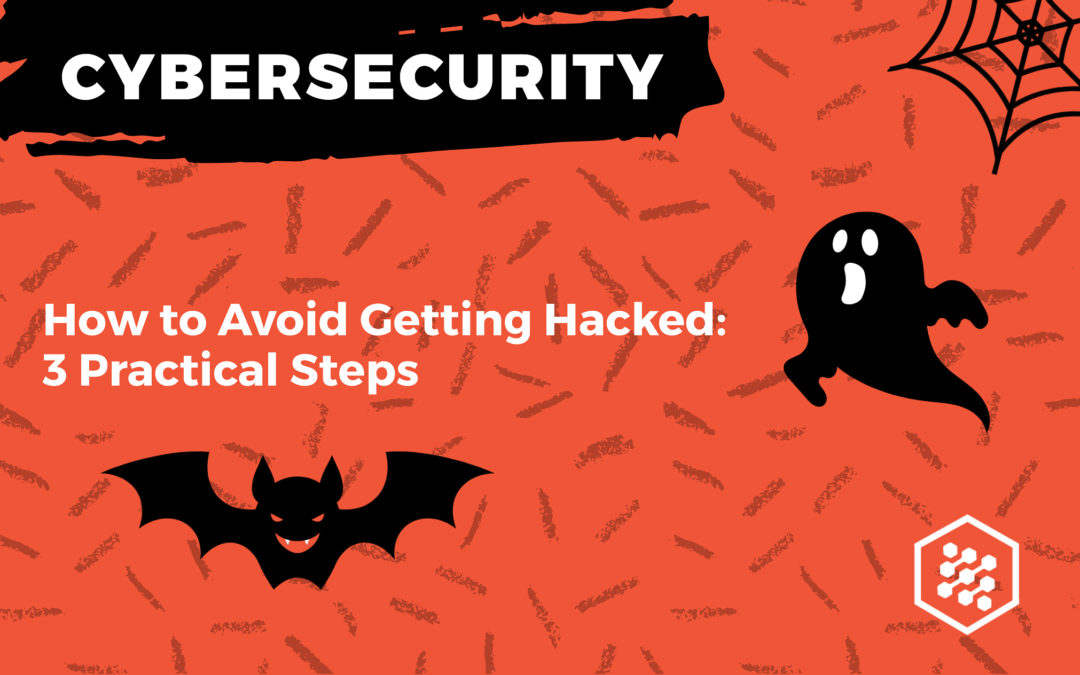
How to Avoid Getting Hacked: 3 Practical Steps
Halloween is just around the corner, and we want you to stay safe online and off. In addition, October is Cybersecurity Awareness Month. We’ll look at 3 practical steps you can take to stay safe online in this post.
Cybercriminals today are primarily targeting individuals rather than breaking into systems in today’s technological landscape. To help you protect yourself from cyberattacks at home or at work, we’ll discuss the three best practices.
1) Phishing Scams
Phishing scams can be spotted and avoided by understanding how they work. Phishing occurs when hackers send fake emails to trick users into giving up personal information by making it appear as though the email is from a legitimate institution or company. You are prompted to click malicious links, download dangerous files, and log into fake websites using fake logos, addresses, and language from real companies. When you enter your credentials to log in, the criminal on the other end steals your username and password to breach your account. The CEO scam is another common tactic, where an email appears to arrive from a CEO or top executive asking for money transfers. Avoid clicking on links or opening attachments that appear suspicious to combat scams that invade your inbox. It’s wise to think twice before transferring money or sensitive information via email and confirm that request with the sender over the phone or in person.
2) Password Discipline
To be connected online, a good password strategy is also essential. Many headlines in the media report on data breaches involving millions of accounts. There is a chance that some of this can be attributed to using the same simple passwords on different accounts. The good news is there are tools like LastPass and Dashlane that will generate complex passwords for your various accounts and store them in one place. A modern password management strategy would not be complete without Two-Factor Authentication. With 2FA, an extra layer of security is created by verifying your login via a text message or application prompt on your smartphone. Two-factor authentication minimizes security breaches by 90%.
3) Phone Scams
In addition, cybercriminals target smartphones. A hacker will contact you on your mobile device, posing as CRA or a law enforcement agency, in the hopes of coercing you into paying back taxes. Here, you should take the same precautions you use against phishing emails, so never provide sensitive information or send money.
Essentially, sound cybersecurity is about recognizing phishing emails, managing your passwords effectively, and being able to identify when you’re getting a call from a scammer. Keep these three points in mind to keep yourself safe anywhere!






